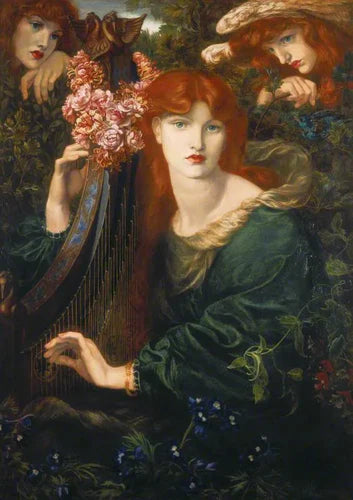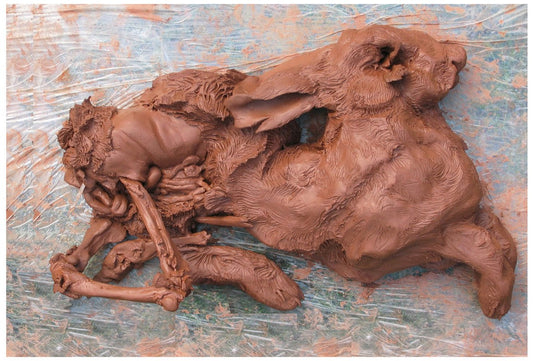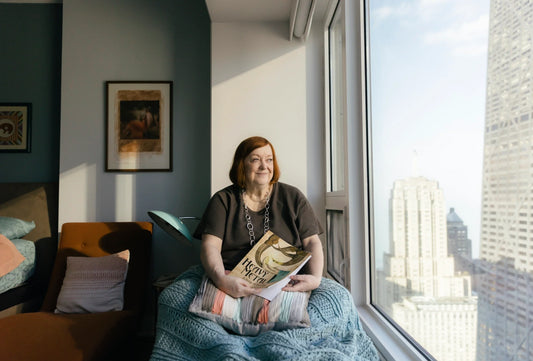In 1848, at the height of the Victorian era, a group of young English artists, poets, and art critics formed a seven-member fellowship: the Pre-Raphaelite Brotherhood. The founding members, William Holman Hunt, John Everett Millais, Dante Gabriel Rossetti, William Michael Rossetti, James Collinson, Frederic George Stephens, and Thomas Woolner established the group in hopes of a return to the rich detail, intense colors, and complex compositions of 15th-century Italian art. The Pre-Raphaelites rejected the classical poses and artifice adopted by artists of the mannerist tradition that succeeded High Renaissance artists such as Michelangelo and Raphael.
In particular, the Pre-Raphaelites opposed concepts of harmony and ideal beauty, which the Royal Academy of Arts had promoted as excellence in the art world. The Pre-Raphaelite ideal of feminine beauty differed greatly from previous artistic styles. Whereas early Victorian artists praised rosy cheeks, round cherub-like faces, and maternal bodies, the Pre-Raphaelites painted female subjects with slim, tall bodies and sharp faces. Many critics were repulsed by this radical appreciation of different body types, reproaching the figures’ deviation from idealized beauty.
As a result of their deviant ideal of beauty, the Pre-Raphaelite Brotherhood created artworks that featured sincere subjects depicted with maximum realism. The female figures are portrayed as assertive, powerful, and confident, a stark contrast from previous depictions of pure, sweet, and submissive women. The central themes of their works included religious figures, subjects from classic literature and poetry, and the concepts of love and death. Although, one visual theme remains distinctly Pre-Raphaelite, even centuries later: long, loose, wavy hair.

Jane “Janey” Burden was the iconic model for most of the Pre-Raphelites’ paintings. She was strikingly beautiful, with thick, dark hair, completely embodying the Pre-Raphelite ideal of beauty. Born in Oxford in 1839 to a stablehand, Burden was the muse of Dante Gabriel Rossetti. When she was 18 years old, Jane Burden attended a theatre performance in Oxford, where she was noticed by Rossetti, who was struck by her beauty and asked her to model for his artwork. After being noticed by a group of artists, Jane began modeling for William Morris’s artwork. During this time, William Morris fell in love with Jane. On the back of his canvas, he wrote “I cannot paint you, but I love you,” a small romantic gesture to her as she posed for him. The couple married in 1859.
A decade later, William Morris and Dante Gabriel Rossetti became joint tenants for a manor house, Kelmscott Manor in Oxfordshire near the Thames River. The marriage between William and Jane was in disarray. It is rumored that Jane Morris began a romantic affair with Rossetti in the late 1860s. Soon after, William Morris left for a trip to Iceland, leaving his wife and Rossetti to furnish the manor together all summer. Jane Morris shared a deep, emotional connection with Dante Gabriel Rossetti. She inspired the artist to create his best paintings and poems during their time together.

After serving as the Pre-Raphaelite muse, Jane Morris would create a new beauty trend. The long, cascading tresses in these paintings were quite revolutionary for the era. During the Victorian era, loose hair was rarely on display in public settings. A young girl could wear her hair down, but as soon as she became a respectable lady, she would pin it up in stiff and intricate styles. A loose-haired woman had erotic undertones, as a lady’s hair was considered to be her glory, the essence of her passion. In a social atmosphere of prudery and stiffness, Pre-Raphaelite hair conveyed a sexual message. Dante Gabriel Rossetti’s Lady Lilith, for example, portrays a legendary femme fatale combing her long hair while she seductively exposes a shoulder to a viewer. Lilith appears self-absorbed and inattentive to the world as she admires her long, red locks in a hand mirror. The painting is a testament to the Pre-Raphaelites’ fascination with feminine allure, as Rossetti attached a quotation from Johann Wolfgang von Goethe’s Faust to the original frame: “Beware . . . for she excels all women in the magic of her locks, and when she twines them round a young man’s neck, she will not ever set him free again.”

After serving as the Pre-Raphaelite muse, Jane Morris would create a new beauty trend. The long, cascading tresses in these paintings were quite revolutionary for the era. During the Victorian era, loose hair was rarely on display in public settings. A young girl could wear her hair down, but as soon as she became a respectable lady, she would pin it up in stiff and intricate styles. A loose-haired woman had erotic undertones, as a lady’s hair was considered to be her glory, the essence of her passion. In a social atmosphere of prudery and stiffness, Pre-Raphaelite hair conveyed a sexual message. Dante Gabriel Rossetti’s Lady Lilith, for example, portrays a legendary femme fatale combing her long hair while she seductively exposes a shoulder to a viewer. Lilith appears self-absorbed and inattentive to the world as she admires her long, red locks in a hand mirror. The painting is a testament to the Pre-Raphaelites’ fascination with feminine allure, as Rossetti attached a quotation from Johann Wolfgang von Goethe’s Faust to the original frame: “Beware . . . for she excels all women in the magic of her locks, and when she twines them round a young man’s neck, she will not ever set him free again.”
©ArtRKL™️ LLC 2021-2023. All rights reserved. This material may not be published, broadcast, rewritten or redistributed. ArtRKL™️ and its underscore design indicate trademarks of ArtRKL™️ LLC and its subsidiaries.





